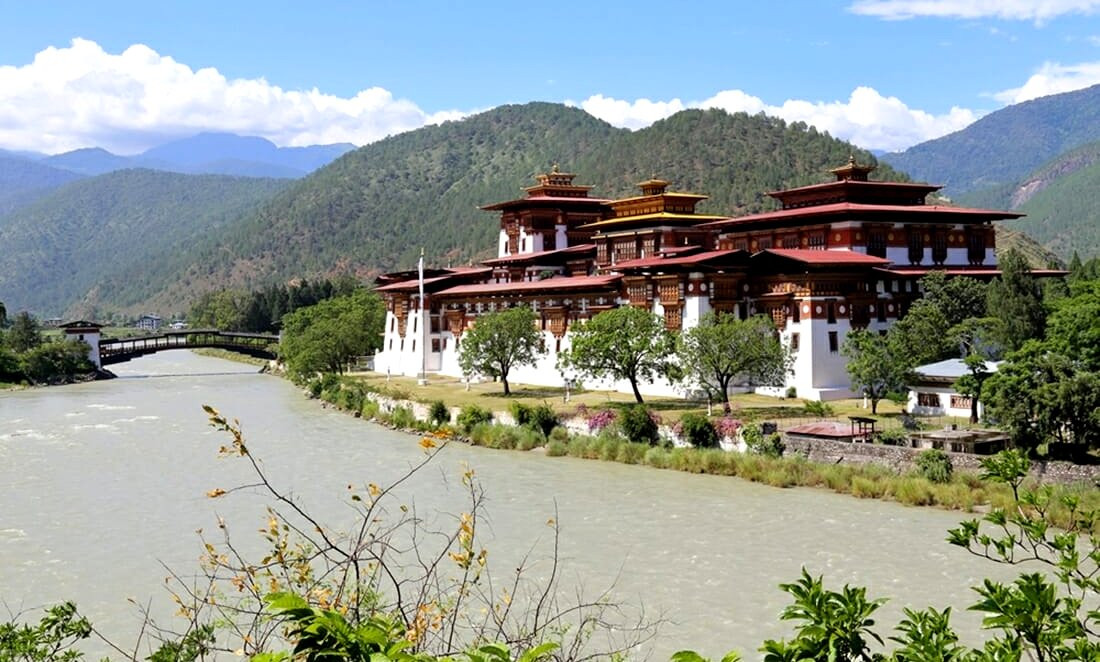Summer Season in Bhutan (June, July, & August)
Summer in Bhutan, from June to August, presents a different side of this Himalayan kingdom, marked by the monsoon season. While it may not be the traditional peak season for tourism, summer in Bhutan offers its own unique set of experiences and attractions that can appeal to certain travelers. Here’s a closer look at what summer has to offer in Bhutan.
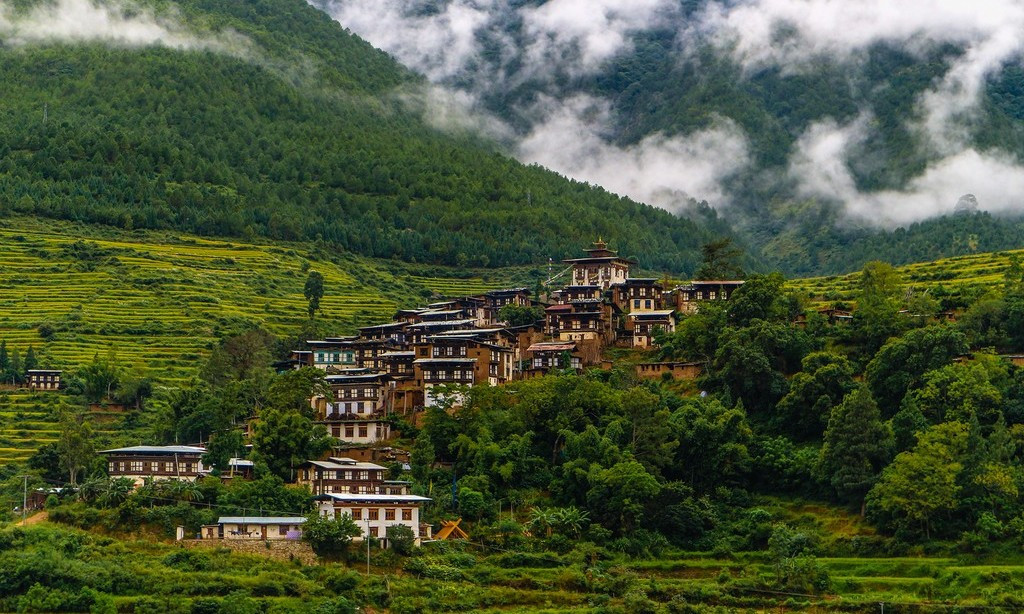
Lush Greenery and Vibrant Landscapes
-
Monsoon Magic: The arrival of the monsoon transforms Bhutan's landscapes into a vibrant palette of greens. This is the time when the forests, valleys, and hillsides are at their most lush and picturesque, ideal for photographers and nature lovers who relish the verdant scenery.
-
Flora and Fauna: The rainy season encourages a bloom of flora and the countryside is dotted with wildflowers. It's also a great time for birdwatching, as many species are active during this period.
Peaceful Exploration
-
Fewer Tourists: With fewer visitors during the monsoon, those who do venture to Bhutan in the summer can enjoy a more serene and personal experience. Popular tourist spots are less crowded, offering a more relaxed pace for exploration.
-
Cooler Climates in Higher Altitudes: While the lower regions of Bhutan can be wet and warm, the higher altitudes remain pleasant and cooler, making them comfortable for visiting and exploring.
Cultural Insights
-
Local Life: The summer months offer a unique opportunity to see Bhutanese daily life in full swing, with farming and traditional activities more visible. It's an excellent time to immerse oneself in the culture.
-
Festivals: Despite being the off-peak season, local festivals and religious events still occur, providing insights into the spiritual and communal life of the Bhutanese people.
Travel Considerations
-
Preparedness for Rain: Travelers should be prepared for heavy rainfall, which can cause temporary disruptions and require flexible travel plans. Waterproof gear and clothing are essential.
-
Road Conditions: The monsoon can lead to challenging road conditions. Travelers should account for extra travel time and consult with local guides and tour operators, like Relax Getaways, for the safest routes and schedules.
Summer travel to Bhutan offers the chance to see a more introspective, verdant side of the country, away from the crowds and bustling festival activity of other seasons. For those seeking solace, natural beauty, and a deeper cultural immersion, the monsoon season holds a special appeal, presenting Bhutan in a light many travelers rarely see.
Spring Season in Bhutan (March, April, & May)
Spring in Bhutan, spanning from March to May, is a period of rejuvenation and vibrant celebration, marking it as a highly recommended time for visitors seeking the full spectacle of the Himalayan kingdom's natural beauty and cultural richness. During these months, Bhutan transforms into a paradise for nature lovers, trekkers, and cultural enthusiasts alike. Here's why spring stands out as a prime season to explore the Land of the Thunder Dragon:
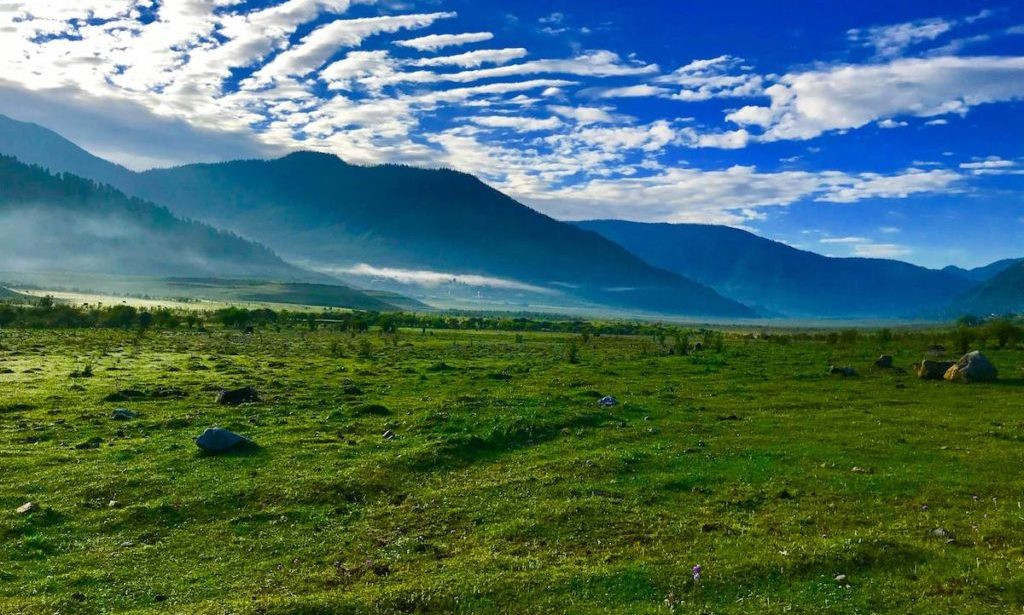
Natural Splendour
-
Bhutan Spring Blooms: Spring witnesses the awakening of Bhutan's flora. The valleys and hillsides are adorned with a kaleidoscopic display of rhododendrons, magnolias, wild azaleas, and various other flowers, painting the landscape in vibrant hues.
-
Best Time for Trekking: The weather is exceptionally favourable for trekking during the spring. The temperatures are moderate, making it comfortable for long hikes. Trails through blooming landscapes offer unforgettable experiences, solidifying spring as the best time to visit Bhutan for trekking.
Cultural Festivities
-
Bhutan Festival Dates: Spring is punctuated with several important cultural festivals, including Paro Tshechu, one of the most popular for its masked dances and spiritual celebrations. These festivals provide deep insights into Bhutan's rich traditions and religious heritage.
-
Bhutan Cultural Events Calendar: Engaging in these cultural festivities allows visitors to immerse themselves in local traditions, enjoy traditional Bhutanese music and dance, and witness the spiritual and communal harmony of the Bhutanese people.
Photography Opportunities
- The Best Months for Bhutan Photography: The clear skies and natural vibrancy make spring an ideal time for photography enthusiasts. Capturing the panoramic views of the Himalayas, verdant valleys, and architectural marvels in the best light is a photographer’s delight.
Travel Considerations
- Bhutan Weather by Month: Starting with cooler temperatures in March and gradually warming up through May, the weather remains pleasant throughout the spring, offering comfortable conditions for exploring both the outdoors and cultural landmarks.
- Planning Your Visit: Given its popularity, spring is a time when planning ahead becomes crucial. Accommodations and guided tours may fill up due to the influx of tourists drawn by the agreeable weather and the array of festivals.
Spring in Bhutan is a season of enchantment, offering a blend of natural beauty, cultural richness, and adventure. It's a time when the country's legendary landscapes come alive, making every moment spent in this Himalayan kingdom a memory to cherish. Whether you're trekking through blooming forests, participating in vibrant festivals, or capturing the beauty of Bhutan through your lens, spring ensures your visit is nothing short of magical.
Fall/ Autumn Season in Bhutan (September, October, & November)
Autumn in Bhutan, spanning from September to November, is widely celebrated as the ideal time to visit this Himalayan kingdom. This season is characterized by clear skies, pleasant weather, and the majestic beauty of the landscape, making it a favorite among tourists for various activities and cultural immersion. Here's why autumn is considered the pinnacle of the Bhutanese travel calendar:
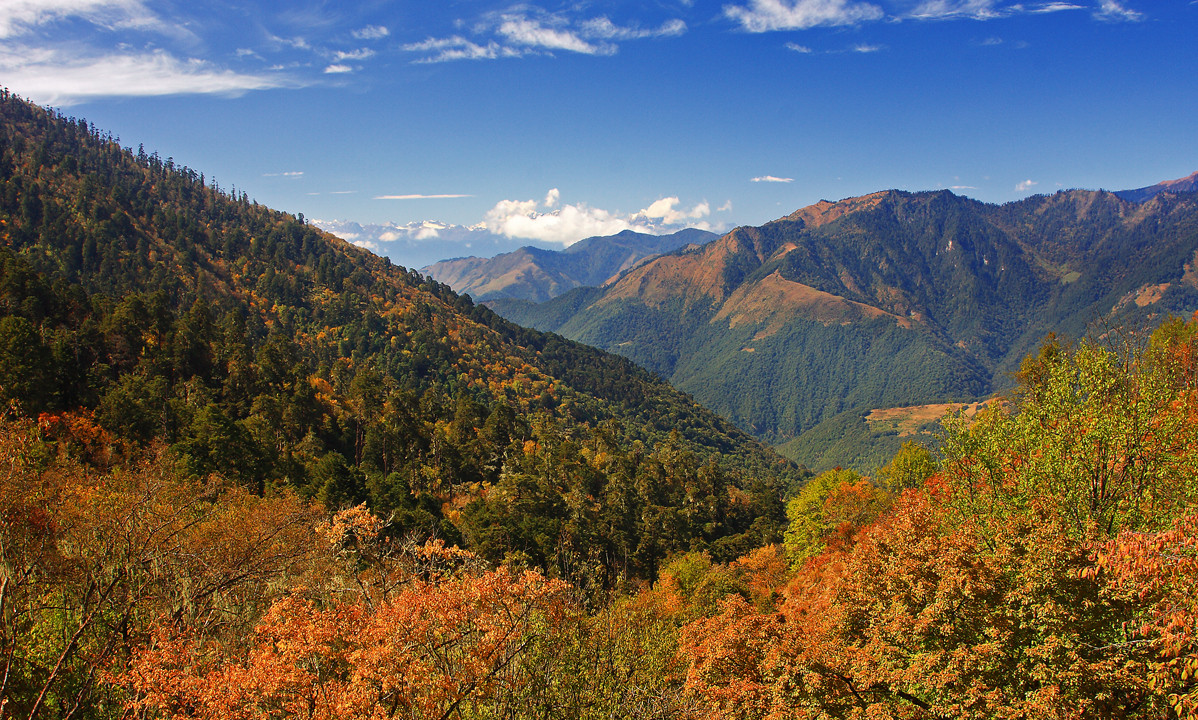
Optimal Weather Conditions
- Clear Skies and Cool Weather: Autumn provides the perfect climate for exploring Bhutan's diverse landscapes. The monsoon rains have ceased, leaving behind clear, azure skies and comfortably cool temperatures, ideal for trekking, sightseeing, and participating in outdoor activities.
Festive Atmosphere
-
Rich Tapestry of Cultural Festivals: Autumn is the season of some of Bhutan's most significant and vibrant festivals, including the famous Thimphu Tshechu and Paro Tshechu. These festivals offer an incredible opportunity for visitors to witness the spiritual and cultural vibrancy of Bhutanese life, featuring masked dances, religious processions, and a myriad of cultural exhibitions.
-
Bhutan Cultural Events Calendar: Engaging with these festivals allows travellers to immerse themselves deeply in Bhutan's traditions, offering a unique insight into the spiritual and communal aspects of Bhutanese culture.
Himalayan Views
- Unparalleled Himalayan Vistas: The post-monsoon clarity in the atmosphere makes autumn the best time for breathtaking views of the Himalayan ranges. The visibility is at its peak, offering stunning panoramas of snow-capped mountains and lush valleys, ideal for photographers and nature lovers.
Trekking and Exploration
-
Ideal Conditions for Trekking: With the favourable weather, autumn is considered the best season for trekking in Bhutan. Trails are in excellent condition, leading adventurers through some of the most picturesque and untouched landscapes in the world.
-
Diverse Wildlife Viewing Opportunities: The clear weather also increases the chances of wildlife sightings, making it a great time for nature enthusiasts to explore Bhutan's national parks and wildlife sanctuaries.
Travel Tips
-
Planning Ahead: Given its popularity, autumn is also the peak tourist season in Bhutan. Travellers are advised to plan their trips well in advance, securing accommodations and guided tours early to ensure a smooth travel experience.
-
Bhutan Travel Itinerary by Season: Tailoring your travel itinerary to include both cultural and natural experiences can help maximize your visit during this auspicious season. From attending the grandeur of Bhutanese festivals to embarking on scenic treks, autumn offers a harmonious blend of activities that cater to all interests.
Autumn in Bhutan not only captivates with its natural beauty and favourable weather but also offers a deep dive into the heart of Bhutanese culture and spirituality through its festivals and traditions. It's a season that promises memorable experiences, whether you're gazing at the majestic Himalayas, participating in ancient cultural rituals, or exploring the serene landscapes that make Bhutan truly unique.
Winter Season in Bhutan (December, January, & February)
Winter in Bhutan, from December to February, offers a serene and majestic atmosphere, making it an intriguing time for those looking to explore the quieter, yet equally enchanting side of the kingdom. With fewer tourists, crystal-clear skies, and the landscape wrapped in a tranquil winter cloak, this season presents a unique perspective of Bhutan's beauty and cultural richness. Here's what makes winter an exceptional time to visit Bhutan:
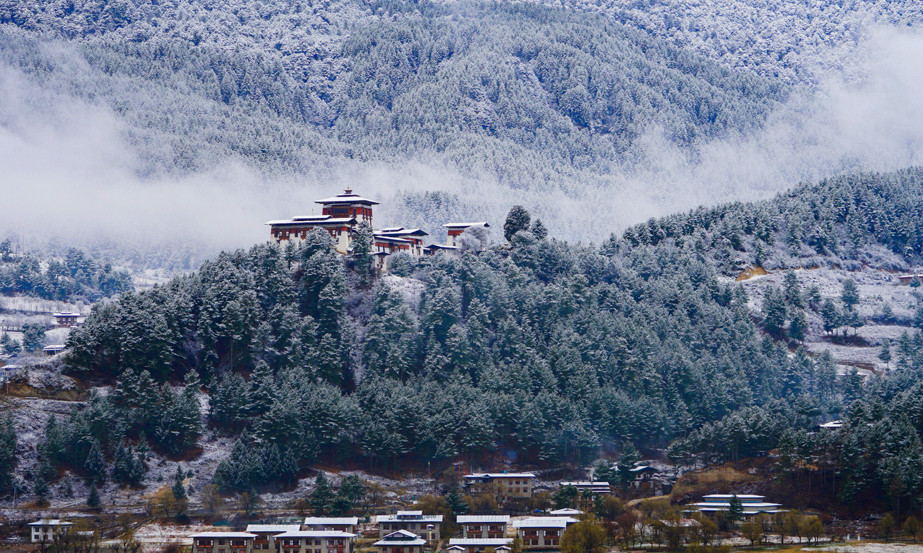
Crisp and Clear Views
-
Snow-Capped Mountains: The Himalayan views are particularly spectacular in the winter, with clear skies offering unobstructed views of snow-capped peaks. It's an ideal time for photography enthusiasts and nature lovers.
-
Pleasant Days: While mornings and evenings can be quite cold, daytime temperatures are often pleasantly cool, making it comfortable for exploring Bhutan's rich cultural heritage and scenic beauty.
Cultural Immersion
-
Festivals: Despite being the off-peak season, Bhutan still hosts several unique winter festivals, including the Punakha Dromche and Tshechu. These festivals offer visitors a glimpse into the rich cultural tapestry of Bhutan without the crowds of the busier seasons.
-
Local Life: Winter provides an intimate look at the daily lives of the Bhutanese people, with opportunities to engage more closely with local communities and traditions.
Unique Wildlife Spotting
- Black-Necked Cranes: The Phobjikha Valley, among other areas, becomes home to the rare and beautiful black-necked cranes that migrate from the Tibetan Plateau to Bhutan for the winter. Birdwatchers and nature enthusiasts consider this a must-see.
Tranquil Trekking Opportunities
- Low-Altitude Treks: While high-altitude treks may be off-limits due to snow, lower altitude treks are accessible and offer the beauty of Bhutan's landscapes without the strenuous conditions of higher treks.
Considerations for Winter Travel
-
Cold Weather: Visitors should be prepared for cold weather, especially in the mornings and evenings, and pack accordingly with warm clothing and layers.
-
Travel Plans: It's advisable to check with travel agencies like Relax Getaways for updates on weather conditions and any potential travel disruptions, especially in higher altitude areas.
Winter in Bhutan is a time for tranquilly, breathtaking natural beauty, and cultural festivities that are more intimate compared to the peak seasons. It appeals especially to those looking for a peaceful retreat and the opportunity to see Bhutan's landscape and culture in a different light.
Choosing the best time to visit Bhutan depends on what you're looking for in your travel experience. Spring offers vibrant festivals and ideal trekking conditions. Summer brings lush landscapes and a tranquil atmosphere, despite the monsoon. Autumn is perfect for clear Himalayan views and cultural festivities. Winter provides serene beauty and unique wildlife spotting opportunities. With Relax Getaways, you can tailor your Bhutan journey to enjoy its seasonal offerings, ensuring an unforgettable experience whenever you choose to visit.
FAQs for Best Time to Visit Bhutan
Q: Which is the best season to visit Bhutan for trekking?
A: The best seasons for trekking in Bhutan are spring (March to May) and autumn (September to November), when the weather is clear and the natural scenery is at its most vibrant.
Q: When can I witness the famous festivals of Bhutan?
A: Bhutan's famous festivals, particularly the Tshechus, are mainly held during spring and autumn. Check the Bhutanese cultural events calendar for specific festival dates each year.
Q: Is it worth visiting Bhutan in the monsoon season?
A: Visiting Bhutan during the monsoon season (June to August) can offer lush landscapes and fewer tourists, but be prepared for rain and potential travel disruptions. Some travellers find the off-season travel benefits, like lower prices and greater interaction with locals, appealing.
Q: What are the advantages of visiting Bhutan in the off-season?
A: Off-season travel (summer and winter) benefits include fewer tourists, potentially lower costs, and a more authentic experience of Bhutanese daily life.
Q: When is the best time for photography in Bhutan?
A: The best months for photography in Bhutan are during the spring and autumn when the skies are clear, offering spectacular views of the Himalayas and vibrant cultural celebrations.
Q: Can I visit Bhutan's national parks at any time of the year?
A: While Bhutan's national parks are open year-round, the best visiting times are during spring and autumn, when weather conditions are most favourable for wildlife spotting and hiking.
Q: When is Bhutan's peak tourist season?
A: Bhutan's peak tourist season is during the spring and autumn months, coinciding with the best weather conditions and numerous festivals.
Q: Are there any special considerations for winter travel in Bhutan?
A: Winter travel in Bhutan offers unique opportunities, like spotting the rare black-necked cranes. However, visitors should be prepared for colder temperatures and potential travel disruptions at higher elevations.
Q: How far in advance should I plan my Bhutan trip?
A: Given the popularity of certain seasons, it's wise to plan your trip at least 3-6 months in advance, especially if you aim to visit during the peak tourist season of spring or autumn.
Q: What is the best time to experience Bhutan's culture?
A: To fully experience Bhutan's rich culture, plan to visit during the spring or autumn festival seasons, when the country comes alive with traditional dances, music, and religious ceremonies.
If you are looking for different kinds of Bhutan Packages, feel free to contact us.
